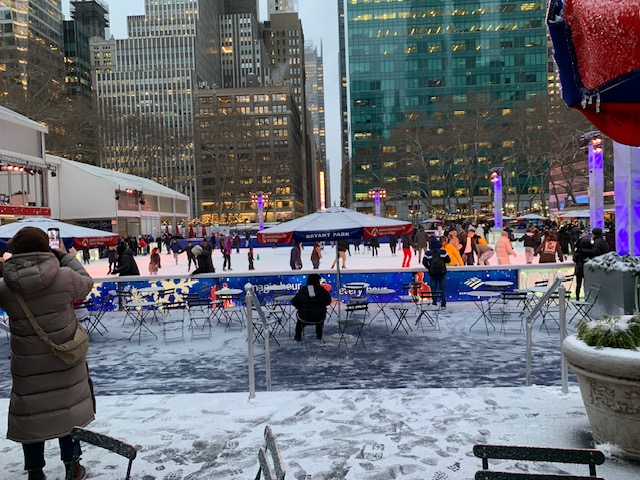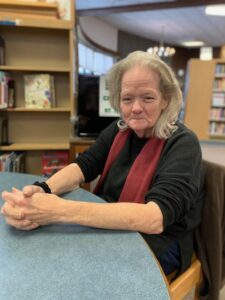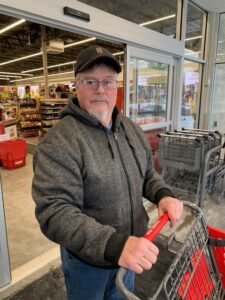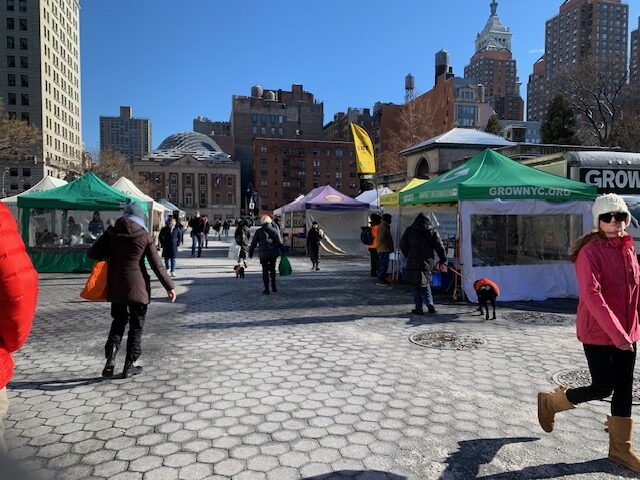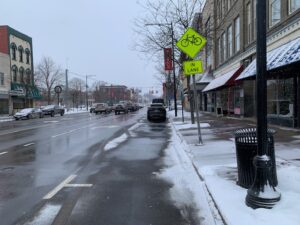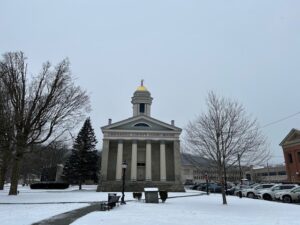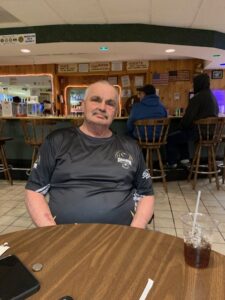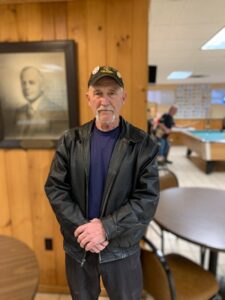Voices in Urban and Rural New York Shed Light on America’s Crossroads
Among the most curious results in the American Communities Project/Ipsos survey of 5,000 Americans last year was the divide between how they felt about the direction of their lives and how they felt about the direction of the country. Most Americans said they felt positively about where their lives were headed, but negatively about the nation’s road ahead. To better understand this chasm, in January the ACP hit the road, interviewing residents in New York City’s Big City boroughs and residents in Chenango County, New York, part of Rural Middle America some 200 miles away, and asking a simple question: Why?
Driving the differences in those attitudes in most cases was a sense of control — or a lack thereof.
Traveling through Manhattan and Chenango, we found residents expressing degrees of agency over their personal circumstances, including choosing where they live, keeping up a healthy lifestyle, striving toward career goals, overcoming setbacks, maintaining relationships with family and friends, and adhering to their spiritual foundations. These detailed conversations painted a fuller portrait of our survey findings. Nationally, 87% of residents said their lives were going in the right direction. In Big Cities, the percentage was 86% and in Rural Middle America, it hit 90%.
Residents in each locale were not as sunny about their community’s direction and cited different community challenges, but still saw a lot of bright spots. This, too, tracked our survey findings. Nationally, 63% of Americans said their community was heading in the right direction. For Big Cities, 58% of residents said so, while in Rural Middle America, 65% did. In New York City, uppermost among residents were the inequalities, the high cost of living, the large influx of migrants, homelessness, crime, and drugs. In Chenango County, drug addiction and housing insecurity were top of mind.
But anxiety and frustration came spilling out when discussing the broader nation’s direction. From the canyons of Broadway in Manhattan to the quiet byways around Broad Street in the town of Norwich, residents said the country was on the wrong track — for different reasons. Uncertainty and increasing friction surfaced repeatedly. Residents referenced poor leadership, a political system not meeting Americans’ needs, economic hardship, and myriad social problems, but found different forces to blame. Again, the dour views closely followed our survey findings. Overall, 79% of Americans said America as a whole was on the wrong track. In Big Cities, it was 75%. In Rural Middle America, it was 86%.
Unlike when considering one’s own life direction, there was a sense that so much in America is out of control — and generally out of an individual’s control. At the same time, some said they saw reasons for hope. They cited their own civic and political engagement, from conversing with community residents of different backgrounds to even voting for the first time in 2023 in middle age. Others pointed to the way America has overcome tumultuous times before.
While one American story did not emerge in our travels, Americans in two of New York’s distinct landscapes shed light on very different values and very different views of the nation.
Your Life’s Direction
New York City
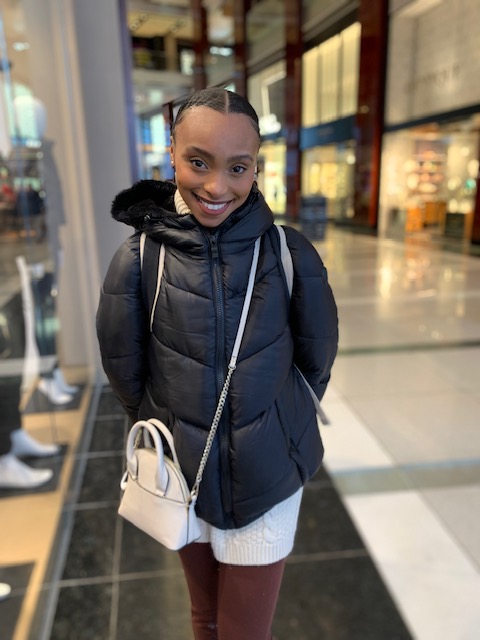
The people we spoke with in Manhattan cited their relationships and vocations as reasons they were feeling positively. One of them was Ollice Spaulding, 22, a student in musical theater at a small conservatory in New York. “I'm very happy with the direction of my life. It all kind of started when I became a jazz singer at 17,” she said. “I really didn't care what everybody had to say. I was like, I know exactly what I want to do with my life. ... And I think moving here last year in January … that was like, the biggest risk I’ve ever taken. ... [I moved] from Kentucky. It's such a big city. And I was so scared. And I don't know anybody here. But it was such a good choice.”
Nicola Orr, 55, a pharmaceutical sales rep, said she thinks her life is generally on the right track. "I'm doing a job I love, my kids are doing OK. I have one in college. ... I got sick last year and I got excellent care. ... I have an amazing boss. I don't go into an office. I work from my car. There's creativity. I love this. I don't want my kids to do it. I want them to do something more.”
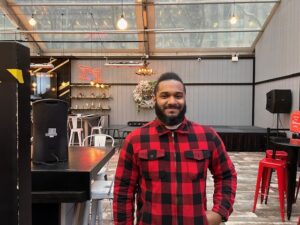
Gabriel Reynoso, 29, a student and service worker in Manhattan who was born and raised in the Bronx, also sees a positive trajectory. “I don't put myself in such a box. ... I'm following my goals. So, I guess I'm on the right track to some extent. I'm still going to school. I'll be finishing up soon.” A chemistry major, he said, “I want to go into research. Originally, my focus would have been materials chemistry, like, building new materials for the next stage of the world. ... But I may be shifting more into chemical engineering.”
Day to day, Reynoso said he feels the effects of high rent and grocery prices. “I have to think about purchases before I make them to some extent. ... I can't do this, because I have to pay rent … or maybe I don't eat this one day, because I have to save up for rent or other bills and utilities that I may have.”
Omar Hayden, 40, a public safety officer in Manhattan, expressed some indecision about his life direction. “If I was where I wanted to be, I wouldn’t be talking to you in the cold … I’d be somewhere running my own company. ... I have my days where I like my job and my days I don’t. ... I don’t like my job today.”
Asked why, Hayden said it would help to be supported with more money and benefits. “I would want to be taken care of a little better in all areas. I don’t think I’m fully there with this company. ... It’s a step in the right direction. If this is really where I want to go with law enforcement, I’d have to take steps to move a little further ahead.”
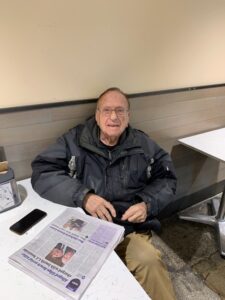
Harvey Liebowitz, 89, was born and raised in the Bronx, has lived in Queens, and now lives in Manhattan. Before he retired, he worked as a banker and raised two sons with his wife, who died in 2000. For the past 23 years, he’s been in an open relationship. “I am happy with the direction of my life, even though I had tragedy of my wife. ... The lady I met was a model and used to take me to the modeling shows and we used to have a lot of fun,” he said. “I love people. You gotta like people, all kinds of people. ... A couple of years ago, I started walking. I do a minimum of 10,000 steps.”
Daniel Sefik, 37, a Manhattan resident for more than 13 years, shared his success as a Broadway musician. “I’m on the right track … I just had a really good career breakthrough. ... I just did a tour last year, my first Broadway tour, and then I started conducting last fall on Broadway. That's been, you know, dreams come true. Generally, I might be heading towards a relationship. So that's also positive.”
Chenango County
The rural New York county offers evidence as to why people tend to say their lives are headed in the right direction. The women and men we talked to in Chenango, even if their lives were facing challenges, said they believe they've been in control of their circumstances — or that they have personally found ways to handle difficulties.

“It's hard, I think to because the right direction could be so many different things. Yeah. I will say, maybe spiritually and compassionately in a growth way, in an emotional way, it's going in a great direction,” said 33-year-old Amanda Mills, who works at the Guernsey Memorial Library in the small town of Norwich. “Financially in my personal life, no, it's been really hard. I used to work for the library because it's a nonprofit. And I believe in the mission, and I'm a big, I'm very passionate about it. And I would love to go to school for it someday. But working for a nonprofit has now made it almost impossible to pay my bills.”
Mills said a plumbing issue in her house had left her with a $1,500 repair bill she couldn’t pay, and it’s led her to look for other work. Still, she said there are jobs available, and that makes her think she can find a solution, even if she has to leave behind the library work that she loves.
Kathleen Murphy, a 65-year-old retired college professor, said she had also run into hard times, but now feels her life is heading in the right direction again. “I had lost my husband, my home, and all of our money was gone. ... But I ran into some good people here. Who helped me out,” she said. “I was at work and my husband got sick. Next thing I know it, I'm out of my house, but my realtor of all people became my best friend and her and her husband and the family. And they found me an apartment that I could afford on Social Security and right in Norwich, right down Main Street there.” She’s made friends with local students who check in on her and offer her food. She has come to deeply appreciate the community.
Richard Given, a 66-year-old retiree, offered the most direct and simple answer for his life being on the right track. “I’ve got it better than 7 billion people. I got food to eat, a house over my head. I got a vehicle to drive. My wife is a dear sweet woman. What else does a man need? I have everything I need.”
Your Community’s Direction
New York City
Residents here described the city's strengths and social challenges in the post-pandemic environment. Darla Decker, 58, a museum writer, is a longtime resident of Manhattan, where she’s observed the city’s ups and downs these past 34 years. The pandemic has changed the city, she said, in some cases for the better. “Covid’s interfered with quite a bit of activity, and I don’t think it’s fully recovered from that yet. At the same time, Covid returned some of the New York City values. People are a little more authentic. ... There was a moment in the early 2000s where all the mom and pops and the interesting things about New York City were failing and disappearing in the interest of CVS and banks and Rite Aid, and all the chain stores were just taking over.”
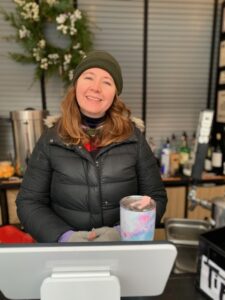
Emily Boggs, 34, a theater artist starring in an off-Broadway show, who also teaches swim lessons and works as bartender in Bryant Park to make ends meet, moved to New York City from Ohio for her dream career in theater nearly a decade ago. She’s lived in Manhattan for the past two and a half years and in Brooklyn for six years previously. “I feel like it's better than everywhere else in the country,” she said. “I mean … with public transportation, with social programs and everything that they offer. There's a lot of things that can be better. ... But my complaints are more on a state or federal level than a citywide level.”
Cory Deshong, 52, a security officer and Manhattanite, said he cannot imagine living outside the city. “I would never move. Even though New York is uber expensive. I'd rather deal with that than deal with the things in the South right now. And I'm talking as a black man. OK, I would never go down South. I wouldn't even go to visit, and I have family down there.”
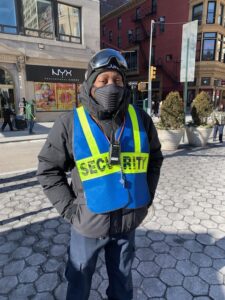
Yet Deshong pointed to the weight the city is feeling by the influx of migrants. “We have a lot of good people leaving. ... [City government] is trying to do so much, and yet so much is getting put upon us by other people. ... You know, like Governor Greg Abbott from Texas … they don't want to take care of things in their backyard. ... And because we're a sanctuary state we're … bearing the brunt of all this stuff.” However, the city is still in a solid financial position, he explained. “Eric Adams has just announced that he has balanced the budget without any tax cuts or without any cuts to programs, so that’s a good thing.”
Nicola Orr, originally from Jamaica and living in Manhattan’s Harlem neighborhood, described the city’s deteriorating safety conditions. “Yesterday, I was walking with my husband to my daughter's, and we saw blood on the ground because somebody got shot where we were walking. The drug trade is vibrant. A lot of people walking around with guns. And the people who bring drugs, they’re stealing and shooting up …”
When Orr first moved into Harlem in 2005, she felt safe, she said, but she’s noticed problems have worsened since the pandemic. “One particular guy kept breaking the door, coming in, and was taking our packages, and walking the floor at night. And I have a ring doorbell so I would see him. Recently, we had to reinforce the building so they couldn't get in.”
Working as a public safety officer in Bryant Park, Omar Hayden laid out the crime problem in blunt terms. “There's no protection from police, unless there's a serious crime. ... [The city] is running wild, you see junkies everywhere. ... They could go into a Whole Foods bathroom, and there's places for their needles … so it's basically saying it's OK. ... When I go into train station, I'm seeing human feces and people doing shooting themselves up, people trying to attack you. ... I see a lot, even just working in this park. No one’s safe here.”
Chenango County
Norwich, Chenango’s county seat, is a quintessential small upstate New York town. The main artery, Broad Street, also known as State Route 12, runs through the center of town lined by two- and three-story buildings that hold the local bakery and coffee shop. The grand Greek-revival style Chenango County Courthouse, built in 1837, sits on the park in the middle of town, just down from the local YMCA. Even though the town and county have had their share of hard times, it’s a tight-knit community. One issue on the minds of residents: drugs and/or drug use.
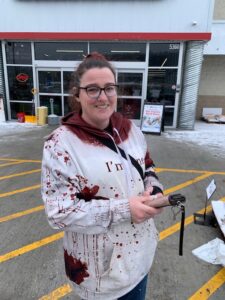
Beverly Oliver, a 41-year-old mother who was recently married, lives in Norwich with her husband and five children. For her, drugs and violence have become serious community concerns. “Norwich, in general, has kind of turned into not a great place to live. Because there's lots of issues. There's the overdoses. I live on Guernsey Street, and there was like a gun shot into the house that's like on the corner of Henry and my street. And yeah, so to be honest, I think that it's kind of a bit of a shit show,” she said. “But I know, like with the school systems, I know that they're, they're not awful. They do their best to make sure that the kids are learning and doing what they need to do and that kind of stuff.”
At the Cottage Bakery, Sabrina Lamphere said the community has had its good and its bad times, but she has also noticed the drug problem. The 54-year-old former stay-at-home mom has gone back to work at the bakery and said the problem has become impossible to ignore. “I don't like the drug issues going on. There's a lot of them and in this town,” she said. “We see it daily, even on the streets. A lot of the tweakers that are out there. And you know, they're on it because of just watching their movements you know, and they’re passing it on the streets. I’ve heard of a lot of meth.”
At the local library, officials from the state were offering a presentation on combatting drug overdoses and how to administer Narcan to people experiencing one. Oliver, the 41-year-old woman, told us her children had seen drug users injecting themselves with narcotics at the library.
But for many, the small community is doing more than staying afloat, it is doing well in a complicated and challenging time. “Overall, I'm always kind of amazed at Norwich. It's kind of a small place. But we have we got McDonald's. We got an Arby's. We got a KFC, all these different restaurants. We got Walmart. I wonder, why do they come here?” said Paul Adams, a 69-year-old retiree. “It’s a nice little town.”
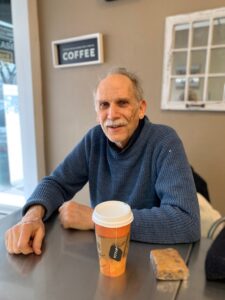
America’s Direction
New York City
On the nation’s direction, Ollice Spaulding, the jazz singer, said she sees a difficult road ahead but also feels some optimism. “I just want people to really appreciate America for what it is and what it's growing to be. ... I think it's growing to get better and better. Now, the road is very bumpy. And I think it will continue to be bumpy. And I think a lot of people have a lot of different opinions and a lot of different ideas of how things should go. But I think that in general, as time has went on, I mean, can I say I'd want to live like how it was back in the ‘50s? No, but it's much better …”
Daniel Sefik, the Broadway conductor, expressed worries about the coming consequences of many unaddressed problems. “It feels like so many things the country is facing right now with regards to gun violence, with regards to climate change, all these things that we’re just like, these are problems … somebody else is going to deal with them. Let's just pass the buck. ... It's hard to say the country is getting worse. But we are not addressing these problems, and that is definitely bad. ... Maybe we are in, like, a pot of boiling water. ... We’re the frogs,” Sefik said.
Scanning Union Square’s outdoor market, Cory Deshong shared similar feelings of ambivalence and alarm. “The state of the country is questionable right now, because if this guy [Trump] gets back in office … it's going to have a tremendous effect on the economy. Because a lot of people are going to pull out of this country, you know, and it's going to have a bad effect.”
In Bryant Park, bartender Emily Boggs voiced more exasperation that the nation has betrayed its values. “Wrong direction. Needs like a major overhaul. It's just, you know, we've been pitched since we were young, that like, America is the best country in the world. Everyone wants to be here, you’re free, and you can do whatever you want. ... Well, if you have the money. I have a lot of issues with the fact that like, the working class is now the working poor, that you can work 40 hours a week and still not be able to afford the essentials, let alone, you know, enjoy your life. I've got major issues with millionaires and billionaires not having to pay their full share of taxes, just billionaires existing. ... It's the inequality. It's … we're still questioning the rights of women, getting paid, like, you know, 70 some cents to the dollar.”
An older millennial, Omar Hayden brusquely stated that the country is not on the right track because of its leadership. “That's a straight no. I think we need better people in politics. We need a younger government because the older government is set in the old ways. I think we need a younger president, younger governor, a younger mayor. They’ll be more for the people now and the people to come,” Hayden said.
Also working at Bryant Park, Gabriel Reynoso took an introspective view from the grassroots level. “I feel like currently, there is almost no direction; it's being pulled in multiple directions. And to some extent, we're being pulled apart. You have your fanatics on one end, your fanatics on another end. ... And then there's like, what are people mentioning about maybe the start of a color war. ... I feel like we’re in a state of chaos, like, our politicians are fighting over one another …”
Reynoso said he finds hope in talking to his fellow diverse New Yorkers. “The people that are feet on the ground that you meet constantly, these people are to some extent truly nice. And they understand everyone's struggling. And so, we have to support each other. ... I'm a true proponent for instead of morality, it's all about ... having compassion for your fellow man. And I just think that right now, because everyone knows that everyone's struggling, our capacity for compassion has increased.”
At the Whole Foods Market café on Manhattan’s Upper West Side, Harvey Leibowitz reflected, “The country is on the wrong direction completely. But it's based upon a very extreme but significant minority that has no regard to democracy, and basically, in my opinion, is racist and worried about the color of the population. And that's the big problem in our country. Also, while this is going on, I discovered, we have imperfections in our Constitution that allow minorities to control the majority.”
However, Leibowitz doesn’t wallow and finds hope in history. “Generally, the past,” he said, “the fact that we've progressed, to some extent … the good people … in the past succeeded to some extent. And I tend, personally, not to be cynical.”
Chenango County
One way Chenango was very much like New York City (and also very different) was in the community’s thoughts about the direction of the country. Like in the city, no one we talked to in the rural community felt the country was on the right track largely due to the nation’s political acrimony. Unlike New York City, most (not all) believed former President Donald Trump was an answer to the problem. That’s not a big surprise considering the election results from this slice of Rural Middle America — Trump captured 60% of the vote here in 2020 — but the feelings run deep.
Sitting in the American Legion Hall in Norwich, Leon Lamb, 69, gave a litany of reasons why he thinks the country is on the wrong track. “I don't think if they don't get Biden out of there, this just, it's going to get worse and worse. They're pushing these electric cars and everything else that you see on the news where it was cold, they couldn't even drive them,” he said. “They're trying to ruin the family deal. With the kids, the first thing they do is teach them when they're young about climate change. And the only reason why they do that they push it so when they get old enough to vote, they think, we’ve got to save the country. Whether it's true or not.” And he worries the government may come take his firearms. “And the gun thing. I’ve had guns all my life. I don't shoot anybody and I don't kill anybody. But every time some crazy guy does some shooting someplace they want to take your guns.”
At 84, Donald Lafever expressed clear ideas about why the country is headed off on the wrong track. “They used to be of the people, by the people, for the people. Now it's of the government, for the government, and by the government,” he said. “The forefathers of our country would roll on their graves that they knew how things were run today.” A registered Republican who has voted in every election since he was 19, Lafever refused to say directly who he thinks is the best person to fix the nation’s problems, but in a brief conversation he talked about government waste and handouts. He made his feelings about 2024 fairly clear. “Donald Trump, I'll tell you what my opinion is about him. I think he’s too damn mouthy, but I think he does a good job. He's his own worst enemy, but he’s got the right ideas. And the reason they want to get rid of him is because he's not a politician. They can't control him and his running. Biden is a puppet.”
Lamphere, who works at the Cottage Bakery, stood out as an exception. She was not a fan of Trump and thought he had pushed a coarseness into the political dialogue. “I think everybody's just too busy fighting with each other and nobody's solving anything. Let’s work together like we used to. Like, I've never seen as many people against the president. When I grew up, it was always you support whoever's in charge. And if you don't like them OK, but keep it to yourself. And seeing people driving with ‘F this’ and ‘F that’ on the back of their vehicles. That’s not the way anybody's going to get anything solved.”
In response, Lamphere registered and voted for the first time in 2023 in a local election and plans to vote this year to at least have her voice heard. “It's scary. Because you don't know where we're going. You know, I don't want to say it's going bad, but it just doesn't seem like it's going good either.”
What It All Means
As the ACP studies the fragmentation of American society and culture, one goal is to offer ideas for stitching the nation’s fraying fabric back together. But the trip to these two communities in New York, places a mere three-and-half hours apart, shows how complicated that work may be.
The people of Manhattan and Norwich live in very different cultural and economic environments, different enough where they feel like different worlds.
In New York City, Darla Decker, the museum writer, summed up the challenge well. “I just think it's really difficult to address everybody's concerns, given the size of our population and the size of the geography and just … the uneven economic development that happens across the entire country.”
One answer, she thought, was “a combination of private contributions, state contributions, federal contributions” that work together to “ensure that people have the opportunities that they need to succeed as Americans.”
That’s probably a sentiment a lot of Americans would agree on. The challenge is negotiating how different kinds of communities see those elements and fit them together to tackle national problems.
The first step in that negotiation will involve a deeper understanding of the wants, needs, hopes, and fears of these different places. A common agreement on what the nation should be will likely be very hard to find. But such understanding integrated with Americans’ sense of agency and resilience can offer an opportunity for coexistence.

